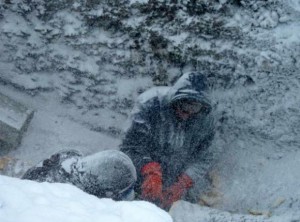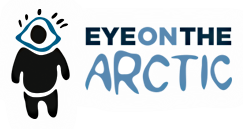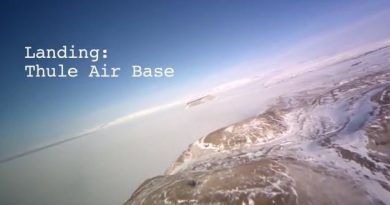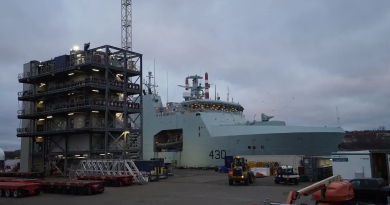No drinking water in Alaska town since March

Nearly a month has passed since Unalakleet’s water system shut down, and the Norton Sound village of about 700 people is still struggling to get its water system up and running as the days tick down to the summer fishing season, when water will be in high demand.
In late March, the main water line froze solid, shutting down service to up to 60 homes and sending work crews into overtime to thaw the pipes. Since then, the village has been surviving without treated water, instead pumping untreated water from the mouth of the Unalakleet River to fill its water tank and allow residents to shower, do laundry and wash dishes.
The water is not drinkable, however, and is not considered safe to drink even if boiled.
On Friday, after locating and fixing a leak near a resident’s home, the city started pumping treated water from the plant to residents for the first time since the March freeze up. All seemed well at first, as 60 gallons of water a minute were flowing through the pipe, the normal amount needed to supply residents with water. But by Saturday morning, the flow had dropped to 27 gallons a minute, indicating a crack had opened up somewhere in the line.
“We thought we had it,” Unalakleet city administrator Scott Dickens said on Sunday.
Lots of work left
Dickens suspects the freeze-up in March caused the leak, and he expects it won’t be the only one that appears. The main water line runs from Powers Creek, 3 miles north of the village, down the coast and parallel to the beach to the village’s water treatment plant, mostly underground. Built in the 1970s, the aging water line is “pretty brittle,” Dickens said, and is prone to cracking when frozen.
Adding to the trouble is seaside erosion, a problem for many coastal villages in rural Alaska, that is exposing the pipe to the ocean’s lapping waves. A decade ago, 10 to 20 feet of coastline lay between the pipe and the ocean, Dickens said. They’ve tried dumping backfill into the eroding area, but it’s a temporary solution at best.
After the freeze-up, crews worked 12-hour days in temperatures as low as minus 20 to thaw out the pipe. They disconnected 1,000-foot sections of the water line and flushed hot water through the pipe to clear out all ice and debris, while snaking a hose around the frozen section to keep the water flowing. Residents were also asked to keep water running continuously to keep the pipes in town from freezing.
The entire pipe was successfully thawed out about two weeks ago, and treated water began filling up the water tank again, while residents continued to use untreated water from the river.
Crews then began to look for leaks by monitoring for soft spots, locations where the ground is soggy from an underground leak. They also used pressure monitors at various intervals along the pipe to gage how the water was flowing. They turned down the water pressure, with help from a new water pump, to ease up the pressure on the aging pipes to prevent new leaks from forming.
On Friday, they had enough treated water stored in the water tank to start pumping it to residents, and the flow seemed normal. But come Saturday, they were losing about half of the water from the tank to leakage.
As of late Sunday, water was flowing back near normal, at about 58 gallons a minute, but Dickens expects more leaks to surface in coming days.
With the water tank slowly being drained and new leaks still possible, residents were asked to conserve water on Saturday morning. As of Sunday, though, the village has enough water in the storage tank to last until mid-week. If leaks keep appearing by Tuesday, they’ll start pumping more untreated, salty water from the Unalakleet River mouth to the tank once again.
Before residents can start drinking water from the main line again, the city and households will need to send treated water through pipes for four days straight to clear out any remaining untreated water from the line, and then send water samples to the Department of Environmental Conservation for testing, before the village can advise residents to start drinking the water again.
Month of adaptation
Tuesday marks one month since the city was cut off from its main water line, but the problems have so far been manageable for residents, said former Unalakleet mayor and city council member William “Middy” Johnson. The untreated water is “not that bad,” he said, and other than having to haul drinking water, the shortage hasn’t affected life that much.
“Living out in rural communities, you just have to be able to adapt and not let things be miserable for you,” Johnson said.
Villagers have been collecting drinking water at a spring about 3-1/2 miles outside of town, or at a known watering hole at the North River, which feeds into the Unalakleet River. Some houses on the hillside also have functioning wells, and those families have “opened their homes,” to the community’s water needs, Johnson said. The city has also purchased some bottled water, in particular for elders, but Dickens said he has not had to distribute much of it yet.
Johnson said he is conserving water by taking shorter showers, running shorter laundry cycles, and using less water for dishes.
Impact on fish processing?
While the community is functioning for now, the real concern is that the water system be fixed come summer, when the village’s salmon processing plant kicks into gear, employing around 70 people and serving as a hub for nearby smaller villages. The plant will need sufficient water to process the fish, and the $1.5 million that comes to the community through employment and salmon sales represents a “big chunk of change” for Unalakleet’s finances, Johnson said. Yet even with a functioning water line, Unalakleet has had water shortages during the summer season for the past few years due to the salmon processing, Dickens said.
The long-term solution is to replace the water line with a new, upgraded system, said Dickens. The village is working with Village Safe Water, a state program that assists rural villages with water issues, with hopes that it will be able to build a new water line to replace the aging pipes.
Dickens has secured funding for a study to examine the best options for a new water system, and after the study is completed, the next step is appealing to the Legislature for funding the project, which Dickens estimates will cost $12-$16 million. They will need to push for a new water line “before this one fails completely,” he said.
In the meantime, Dickens is working on a declaration disaster plan to submit to the state with hopes that the village’s money spent on thawing and repairing the pipe this winter will be reimbursed. However, his first concern lies in getting treated water running back to the community.
“We need to get this pipe going,” he said.
Contact Laurel Andrews at laurel(at)alaskadispatch.com



